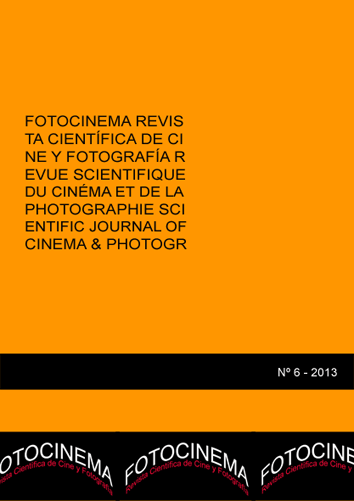La Medea de Lars von Trier
DOI:
https://doi.org/10.24310/Fotocinema.2013.v0i6.5909Abstract
El presente artículo analiza el modo en el que Lars von Trier recrea para el cine el estereotipo de Medea. Mediante el análisis fílmico de la película y apoyándose en los estudios culturales, el texto se interroga acerca de la importancia y el poder potencial del cine a la hora recuperar el antiguo mito y demostrar su vigencia. El análisis amplía horizontes para la compresión de los mecanismos que articulan el entramado de significados de la película, donde Von Trier aporta una nueva visión del arquetipo de Medea uniéndola, a la tradición pictórica del Romanticismo. Una influencia que habita en las posteriores obras del director danés, donde el paisaje, la naturaleza, se erige en elemento catalizador de las pulsiones humanas, en su cómplice y testigo.
Abstract:
This paper explores the way that Lars von Trier’s film recreates the stereotype of Medea. Using film analysis and based on cultural studies the article asks about the importance and potential power of cinema to recover the ancient myth and show their effects. The analysis expands horizons for the understanding of the mechanisms that link the network of meanings of the film, where the author offers a new vision of Medea's archetype attaching it to the pictorial tradition tied to the Romanticism. An influence that can be seen in the later works of Lars von Trier, where the landscape, the nature, stands as a catalyst of human drives, as his accomplice and witness.
Palabras clave:
Medea; análisis fílmico; cine; estudios de género; mitos
Keywords:
Medea; film analysis; cine; gender studies; mythsDownloads
Metrics
Downloads
Published
How to Cite
Issue
Section
License
All contents published in Fotocinema Revista científica de cine y fotografía are protected under the Creative Commons Attribution-NonCommercial-ShareAlike 4.0 International (CC BY-NC-SA 4.0) license. All about this license is available in the following link: <http://creativecommons.org/licenses/by-nc-sa/4.0>
Users can copy, use, redistribute, share and exhibit publicly as long as:
- The original source and authorship of the material are cited (Journal, Publisher and URL of the work).
- It is not used for comercial purposes.
- The existence of the license and its especifications are mentioned.
There are two sets of authors’ rights: moral and property rights. Moral rights are perpetual prerogatives, unrenounceable, not-transferable, unalienable, imprescriptible and inembargable. According to authors’ rights legislation, Fotocinema. Revista científica de cine y fotografía recognizes and respects authors moral rights, as well as the ownership of property rights, which will be transferred to University of Malaga in open access. The property rights are referred to the benefits that are gained by the use or the dissemination of works. Fotocinema. Revista científica de cine y fotografía is published in an open access form and it is exclusively licenced by any means for doing or authorising distribution, dissemination, reproduction, , adaptation, translation or arrangement of works.
Authors are responsable for obtaining the necessary permission to use copyrighted images.













13.png)




